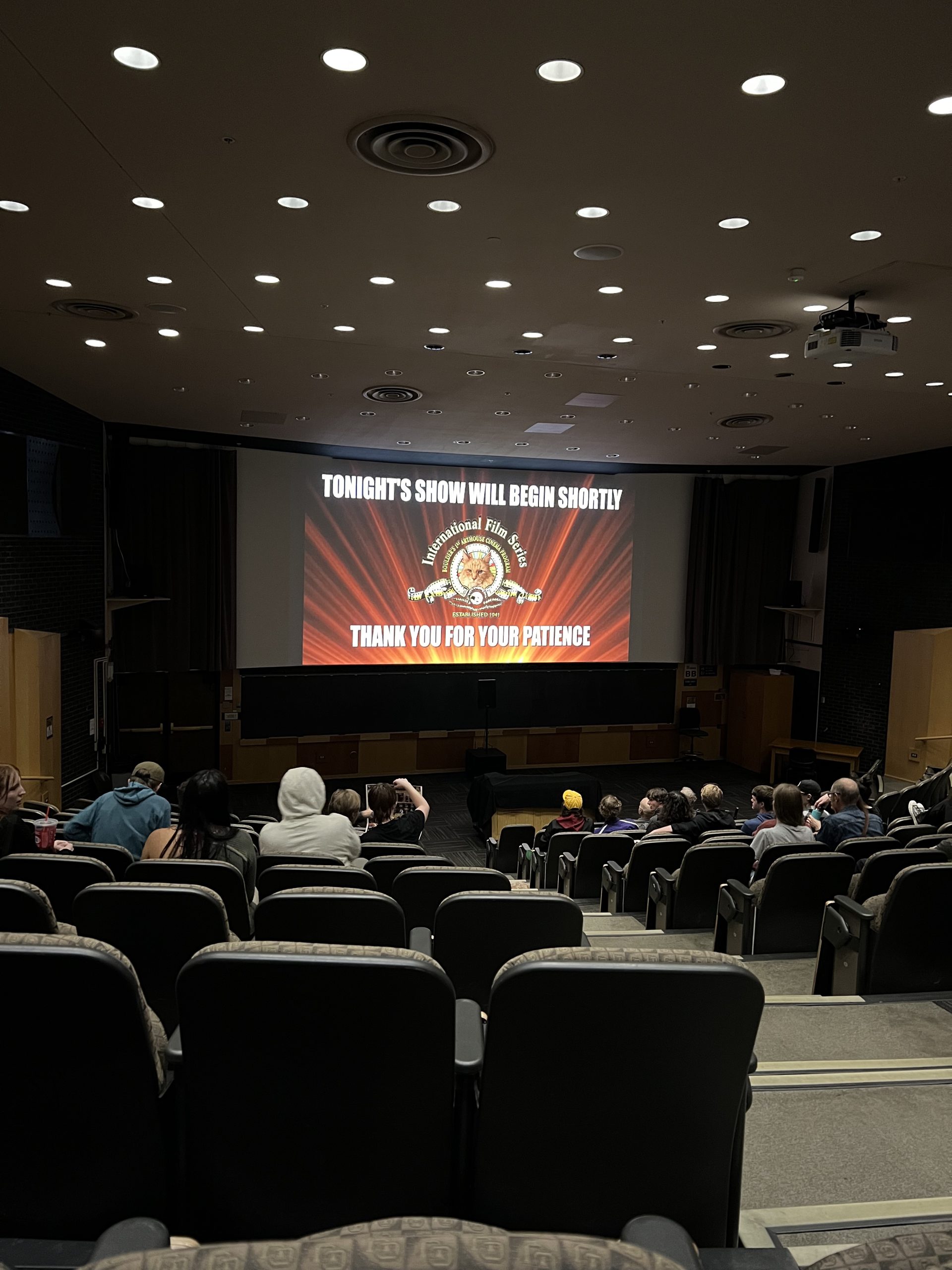
CU’s International Film Series showcasing the “Asteroid City” film by Wes Anderson. (Daniel Mattie/CU Independent)
Watching a Wes Anderson movie is a journey for the mind, eyes and heart that no other director can replicate. Anderson has been able to create and popularize his own genre of postmodern filmmaking.
He is able to make movies that compete for the Palme d’Or at the Cannes Film Festival which are still accessible to mainstream audiences with theatrical and streaming releases. Anderson can assemble an ensemble cast that’s about as good as any film that hits the big screen.
Seeing it on the big screen is also an experience that cannot be replicated. That is why the International Film Series at the University of Colorado Boulder exists which is why they chose to show “Asteroid City.” They are the only arthouse cinema in Boulder that focuses on showing movies that are not necessarily always shown at your local movie theater or given the same importance.
“It gave my friends and I a place to go to enjoy art in a way that felt accessible to us,” said Kaitlyn Potter, a sophomore at CU studying film and is also a student-manager/projector for the International Film Series (IFS).
The IFS is committed to creating a community around films on campus by bringing films from different countries to be showcased. This program has an annual calendar devoted to this mission and even has certain weeks devoted to highlighting actors such as Bruce Lee.
The film “Asteroid City” is visually captivating with eccentric fashion styles and an ensemble cast that compliments one another. The likes of which include Tom Hanks, Scarlett Johansson, Bryan Cranston and Margot Robbie. The film explores themes of grief and dealing with uncertainty through the playwright and the characters in the play having to explore their own relationships.
“Asteroid City” also follows the Anderson style of telling stories with non-traditional narrative structures. This film tells the story of a play happening from the perspective of a playwright while also being narrated by a host. This structure is quite meta and at first, becomes a bit confusing. However, as the film progresses the story becomes advanced succinctly through all three frames.
The unique visual style of the director is what truly shines through in this movie. It is set in a 1950s fictional desert town and has an incredibly bright color palette that accents the characters and their costumes to perfection.
The film also transitions seamlessly between the play itself being shown in color and the playwright’s description being shown in black and white. This contrast allows the film to be digested more easily and allows the pacing to be more easily managed for the viewer.
Being able to experience this film in large format is a pleasure but even on your TV at home, it is going to be a fun experience for all. This is why watching Anderson’s films is so unique and captivating even if you are watching at home.
You are always going to be transported into a different world as you watch a story unfold with a style that is unlike any other films out there.
Contact CU Independent staff writer Daniel Mattie at Daniel.Mattie@colorado.edu.
